Categories
Subjects
Authors
Artists
Venues
Locations
Calendar
Filter
Done
April 13, 2023 – Review
“Bruno Schulz: The Iron Capital of the Spirit”
Ewa Borysiewicz

In 1942, the Jewish-Polish artist and writer Bruno Schulz was murdered in the street by a Nazi officer. Though his weird and immersive short stories—many of which are set in his hometown Drohobych and in a dreamscape rendered after it—have lasted, most of his art perished with him. The small fragment of his visual oeuvre which survived the war has often been sensationalized, reduced to mere embodiments of the artist’s masochistic and fetishistic fantasies. Thankfully, here curator Jan Owczarek proposes a more nuanced take, setting Schulz’s work alongside that of contemporary artists who share his interest in forging personal, ambivalent mythologies.
The title of the show is sourced from an interview with the artist in which he suggests that artists tend to explore a limited number of subjects across their creative lives. The exhibition charts the handful of visual themes towards which Schulz leaned—genre scenes against a city background, or conversations set in tiny rooms—but his overarching subject, returned to obsessively, was the depiction of gendered power dynamics. The opening work—a 1919 self-portrait in pencil on paper—serves as a good example. Here, we see the artist, his gaze fixed on the beholder, leaning in front of a drawing board. The …
September 15, 2022 – Feature
Warsaw Roundup
Ewa Borysiewicz
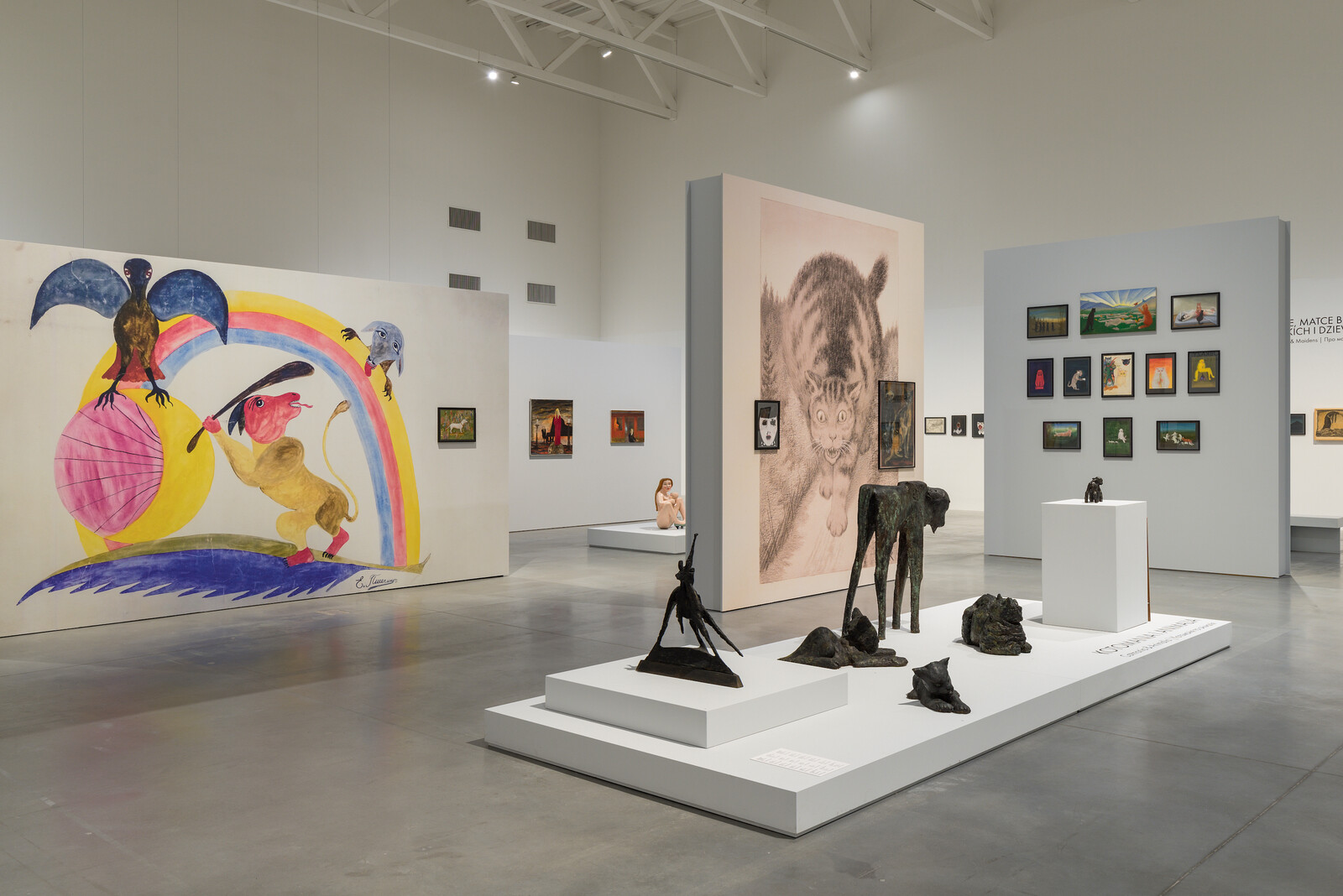
Poland, as the theorist Maria Janion has noted, lies East of the West and West of the East. The cognitive dissonance can sometimes manifest in a complex blend of inferiority complex and messianic pride, often expressed via tales of the nation’s suffering and past glory. The majority of post-1989 efforts to tell the nation’s history have focused on repressing “Eastern” attributes in favor of “Western,” but Russia’s war on Ukraine has seen the nation assert its solidarity with its beleaguered eastern neighbor.
Warsaw’s Museum of Modern Art is trapped between the Stalinist Palace of Culture and Science and proliferating skyscrapers, and the institution’s programming reflects the difficulty of reconciling these two influences. Its temporary home, close to the Vistula River, currently hosts “The Dark Arts: Aleksandra Waliszewska and Symbolism from the East and North,” curated by Alison M. Gingeras and Natalia Sielewicz. The reclusive painter has gained an enormous online following for her somber, cryptic gouaches depicting a cast of mysterious figures including woman-spider hybrids, sinister Slavic wraths, lonely hangmen, flayed youngsters, and bleeding mystics.
The curators have applied a decorum-defying social media logic to the show’s methodology, juxtaposing works of varying provenances and gravities. Yet the physical center of …
January 20, 2022 – Review
Teresa Gierzyńska’s “Women Live for Love”
Ewa Borysiewicz
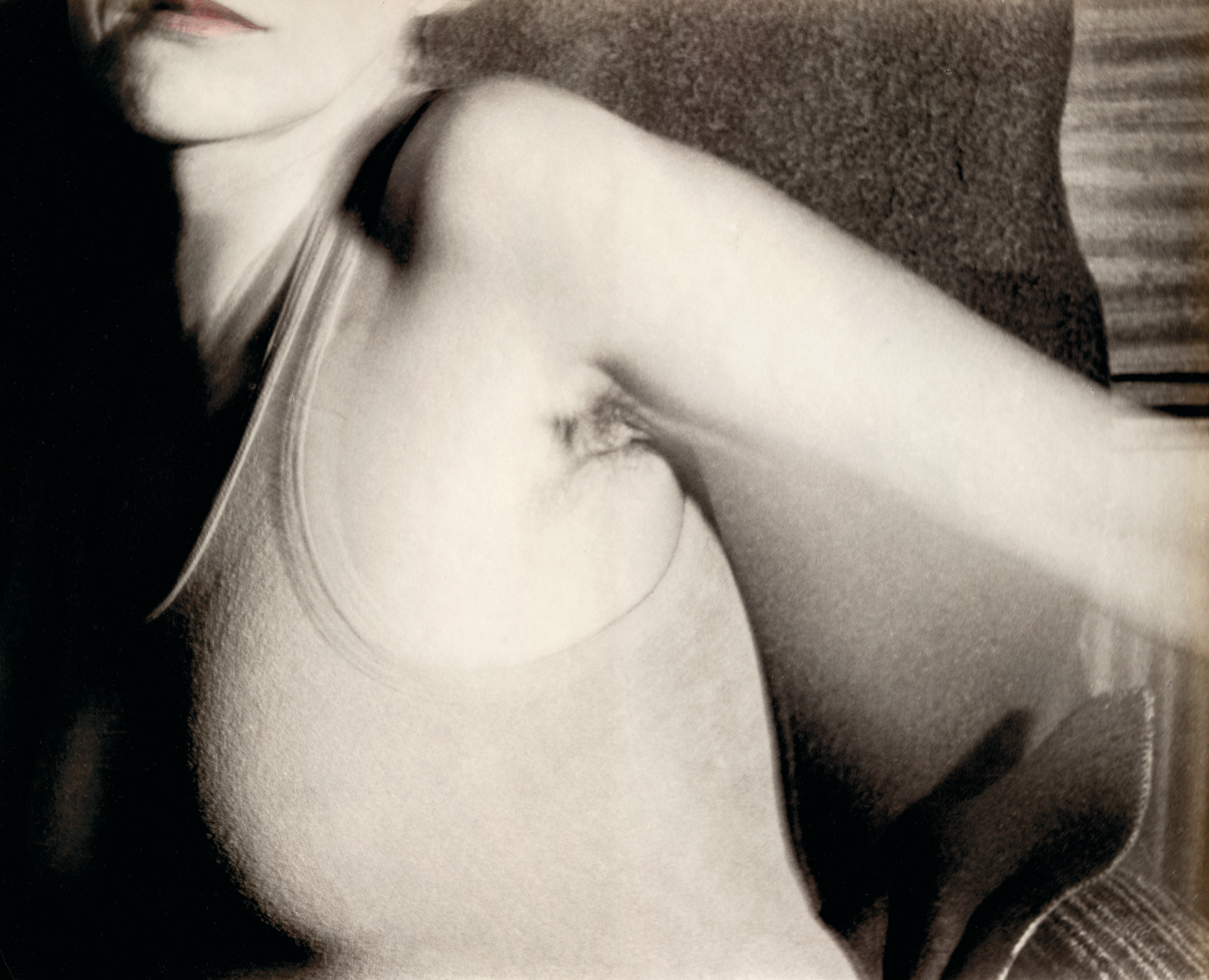
Viewers are caught in a crossfire at the start of Polish photographer Teresa Gierzyńska’s first major retrospective. On the facing walls of Zachęta National Gallery hang two self-portraits. The black-and-white images Left-handed I and Left-handed II (both 1980) show the artist pointing a crude reflex camera towards the center of the gallery. With this simple gesture, she communicates that she’s in charge here.
Born in 1947, Gierzyńska trained as a sculptor in the studio of Oskar Hansen, who encouraged her “to experiment, to question the existing rules.” Gierzyńska’s experiment is not merely formal or technical, but extends to challenging the patriarchic status quo. It is, first and foremost, an existential decision: a way of living and making art. The “About Her” series (1979–present) introduces a number of the techniques by which Gierzyńska pursues this project, and this first part of the show is prefaced by a revealing quote from the artist: “I talk about intimacy, love, loneliness, femininity, motherhood, puberty, relationships […] in a rather quiet voice, even a whisper.”
Her photographs are colored with aniline, while details are added with pen and pencil; other images are copied and reframed. These intimate pieces cover one wall without an immediately discernible order, resembling …
May 28, 2021 – Review
Piotr Łakomy’s “Combined Vessels”
Ewa Borysiewicz
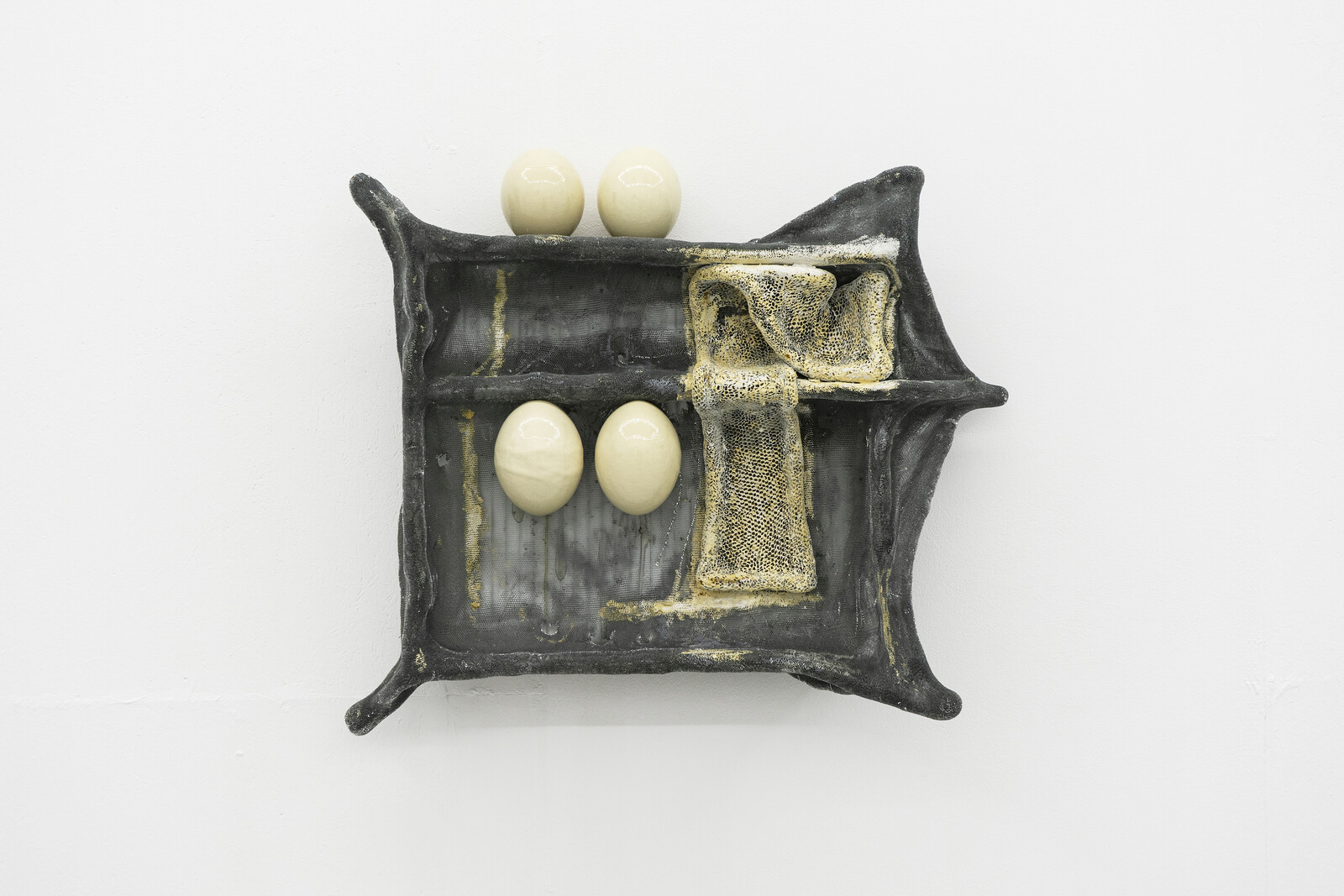
Piotr Łakomy’s work reconsiders the classical idea of the human figure as model of good proportion. Recent events have proved beyond any lingering doubt that man is in fact not the measure of all things, and the Polish artist’s latest exhibition focuses on feedback loops between human and nonhuman agents as one alternative source of aesthetic form. Łakomy’s presentation of painting-like sculptures and sculpture-like paintings, composed of both organic and inorganic matter, hints at a possible way out of the nature-culture dichotomy.
Łakomy’s points of departure are Le Corbusier and Frederick Kiesler, whose contrasting architectural theories outline the field of his investigations. Le Corbusier’s insistence on rational principles provides Łakomy’s works with their basic structure; Kiesler’s emphasis on fluidity is reflected in the versatile and unpredictable character of the fabrics with which he fills his frames. Best known for his careful, minimalist sculptures, Łakomy has recently gravitated towards an even more ascetic style, reflected in his new sculptures’ nearly two-dimensional design and unified formats. The majority hang with their upper edge 140cm above the ground (the height is conceived to meet the eyeline of the body according to which Le Corbusier’s scale, the Modulor, was …
October 21, 2020 – Review
“Wages for Housework”
Ewa Borysiewicz
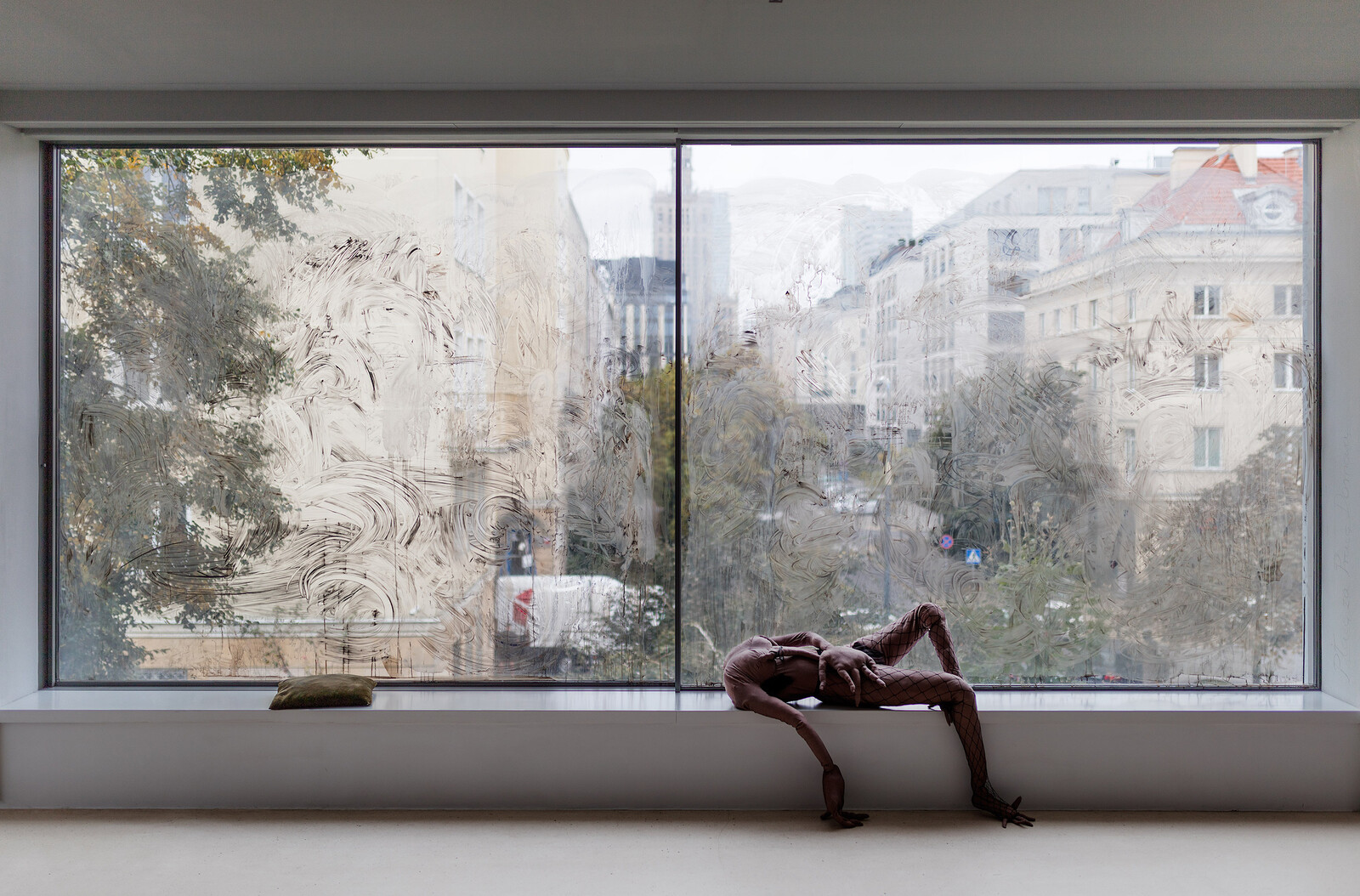
In “Wages for Housework,” Paulina Ołowska takes up the ongoing task of writing women back into art history. Foksal Gallery Foundation’s exhibition of the Polish artist’s work—alongside paintings and sculptures by Agata Słowak and Natalia Załuska—reflects on the foundations of modern art, emphasizing the interdependency of gender and capital, by reimagining the modernist environment of Warsaw’s best-known white cube.
The show builds on Ołowska’s longstanding interest in complicating the male history of modernism; her previous work has involved research on artistic personas (including Zofia Stryjeńska, Janina Kraupe-Świderska, and Maja Berezowska) and engaged with media and visual idioms that blend “high” and “low” culture. More recently, she has turned towards an investigation of “the grotesque” as formulated by Mikhail Bakhtin: its main principle of corruption as a means of subverting the dominant discourse is apparent in works focused on points of breakthrough, crisis, and change.
“The grotesque,” notes the writer Tess Thackara, “is inherently associated with the feminine, long having shaped depictions of the female body—prostitutes, femmes fatales, and sorceresses.” These transgressive figures populate the first part of the show. Słowak’s painting The Sacrificial Rabbit (all works 2020) depicts three female personages with the animal offering hanging in the background. The trio, …
September 29, 2016 – Review
Warsaw Gallery Weekend
Orit Gat
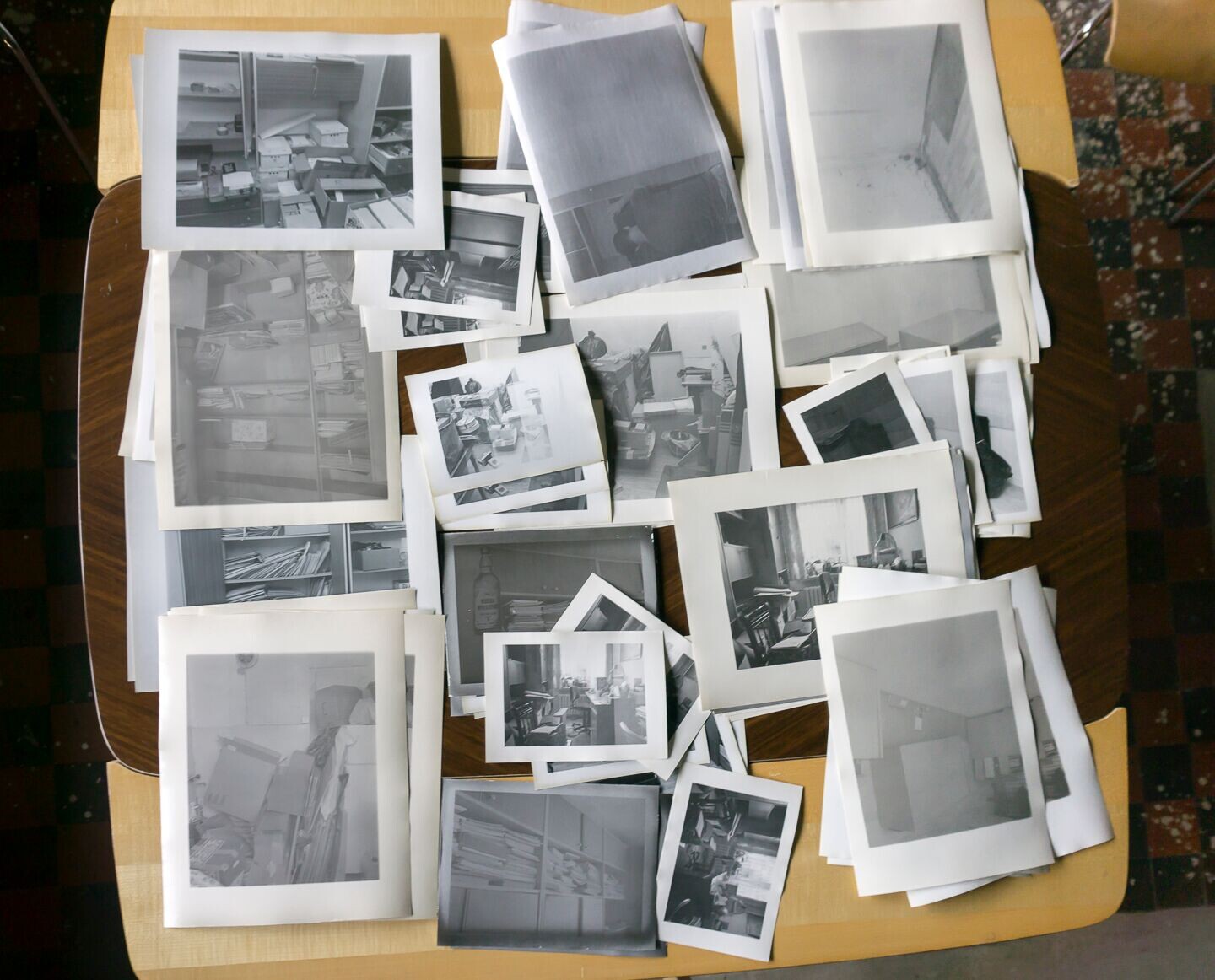
In a city where most galleries are located in apartments, the experience of visiting exhibitions goes against the art-tourist impulse to catch as catch can. Stand outside buildings, buzz in, climb stairs, see the neighbors in the hallway—it’s an experience of proximity that is different from viewing art at a fair or a biennial, or even a Chelsea gallery (where the inverse happens, and the glass buildings lining the streets post signs at the entrance to their lobbies reading “this is not an art gallery”), and it allows for an appreciation of the gallery show, that basic structure of presentation that viewers often neglect in the midst of other international festivals.
At times, the domesticity of the galleries inspires nontraditional presentations. At Asymetria there is an unilluminating group exhibition—black-and-white images of urban landscapes and portraits framed and hung horizontally, to echo a filmreel—about the influence of neorealist cinema on Polish photography in the 1950s and ’60s, featuring the works of Zdzisław Beksiński, Jerzy Lewczyński, and Marek Piasecki. But upstairs a project by a younger photographer, Błażej Pindor, is presented as though within a bedroom: there’s a single metal bed in the corner, a couple of clothes hangers on hooks. In the …
November 24, 2015 – Review
Dorota Jurczak’s “Bzzz”
Ana Teixeira Pinto

If the buzzer rings, will you open? Dangers are legion: scammers, Jehovah’s witnesses, traveling salesmen, black-eyed children, werewolves. Better to keep the door closed. Much can be inferred from the social response to buzzing at the door. I’ve lived through the transition from the most pedestrian of locks to an impressive surface-mounted deadbolt, and the corresponding protocols, from spontaneously opening the door, regardless of who’s there, to the fearful world of spy holes and intercoms––and yet nothing could have prepared me for the vault-door kind of thing I encountered in the Americas. Moving to East Berlin, on the other hand, was like traveling through time back to the days of social democracy, before widespread social paranoia and rampant inequality.
Polish-born artist Dorota Jurczak’s characters also seem to belong to a gentler world, which, somewhat paradoxically, is also more somber than ours. In her paintings exhibited at Galeria Piktogram, two of the artist’s slender and demure figures ring the buzzer: Bzzz and Bzzz Bzzz (both 2013). No Bzzz Bzzz Bzzz, as that would seem a tad compulsive. Besides, no matter how much they rang, the door would never be opened: none of the remaining protagonists in Jurczak’s paintings and sculptures have any …
October 21, 2013 – Review
“The New Morals”
Agata Pietrasik
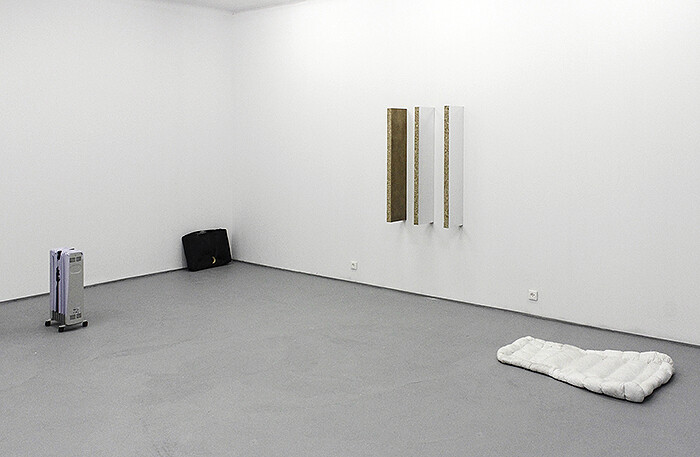
Galeria Stereo’s contribution to the third edition of Gallery Weekend, Warsaw’s pre-eminent art event, is a compact and elegant presentation of mostly sculptural, albeit intensely imagistic work by four artists: Nina Beier, Piotr Łakomy, Gizela Mickiewicz, and Michael E. Smith. It is also the first exhibition in the gallery’s stylish new space on Żelazna Street in Warsaw, having previously been based in Poznan.
The title of the show is inspired by a verse—“The new morals have altered the original data.”— from “The New Spirit,” a 1972 poem by John Ashbery. The original collection, Three Poems, in which the text appears, is available to read in the gallery space. Ashberry’s vivid, fluxed poetic language is a good match for the works on view, which could be described as exercises in the de-familiarization of everyday objects and materials. And just as with Hans Holbein’s famous anamorphic skull in The Ambassadors (1533), one often needs to look at things from a certain perspective to see them properly.
In her “Demonstrators” series (2011), Beier repurposes generic stock images—ordinarily stored in large databases and sold for commercial reproduction—by pairing these large, high-quality prints with carefully selected domestic objects. Two quintessential examples—the frame and the radiator—are shown here: …
October 16, 2012 – Review
Slavs and Tatars’s "Too Much Tłumacz"
Karol Sienkiewicz
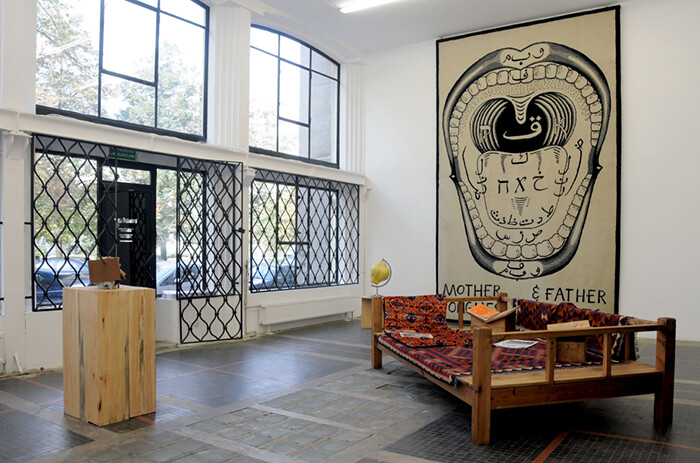
In 1983, Czech writer Milan Kundera defined Central Europe as those states that historically and culturally belonged to the West, but had been politically assigned to the Eastern Bloc in the geopolitical wrangling of the Cold War. His notable essay “The Stolen West” (1983) accentuated the shared cultural heritage of the countries on both sides of the Iron Curtain and held a strategic value in defying communism. Today, over two decades after the fall of Berlin Wall and almost a decade after the European Union’s border shifted eastward, such designations sound woefully outdated. Yet the artistic collective Slavs and Tatars locate their geographical interest “east of the former Berlin Wall and west of the Great Wall of China.” Their first solo show in Warsaw is dedicated to linguistic complexities and what is lost (or gained) in translation. But what strategies lurk behind their approach?
In the center of the gallery stands a peculiar structure made of wood, a takhit, a type of furniture found in tea houses, kiosks, or restaurants across Central Asia. It resembles a bed, but lacks a mattress or upholstery and is covered instead with patterned rugs. Here it acts as a reading platform, with Slavs and Tatars’s …
March 9, 2012 – Review
“Crime is on Both Sides”
Karol Sienkiewicz
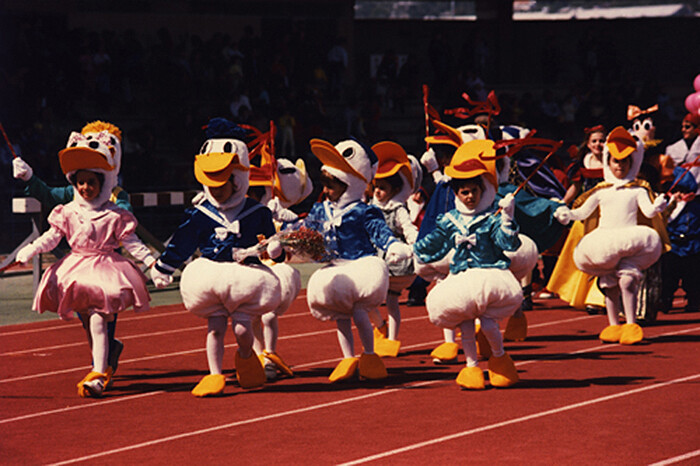
Symmetry rules the world, as if god created it with a mirror in hand. Stereo Gallery in Poznań, western Poland, has two rooms like a man has a pair of hands, a pair of eyes, a pair of ears, two cerebral hemispheres, etc. The stereophony in the gallery’s name reflects the musical interests of the artists it represents; moreover, the place is run by the couple Zuzanna Hadryś and Michał Lasota. But this time around, they decided to invite an outside curator, Martha Kirszenbaum, whose show features works by four artists who reacted to its dual space. “Crime is on Both Sides,” the title says.
Kirszenbaum’s curatorial concept likens the division of the gallery’s space to that of a human brain. According to a popular psychology, the brain’s lateral hemispheres are responsible for either emotional or logical functions. Quite a ‘cerebral’ vantage point, to be sure, but what’s the harm in having a little fun?
The show however, consisting of four works only, translates this dichotomous division into different modes of storytelling, or, more precisely, structuring memory, both collective and individual. To the left, in the light room, Alexandre Singh’s intricate diagram composition of collages and lines on the walls offers a …